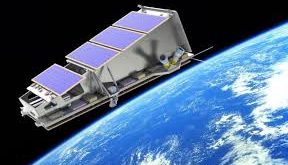Introduction The future of space exploration is an exciting frontier, with plans for humans to journey further into the cosmos than ever before. NASA’s Artemis program, in collaboration with international space agencies, envisions an orbiting lunar space station (Gateway) to support lunar landings by 2024, followed by the establishment of …
Read More »Advancements in Earth Observation: Synthetic Aperture Radar (SAR) Satellite Constellations
Introduction Remote sensing, the science of collecting information about Earth’s surface without direct contact, has made tremendous strides in recent years. One of the most significant innovations in remote sensing technology is Synthetic Aperture Radar (SAR) satellite constellations. These constellations are revolutionizing our ability to observe and understand our planet, …
Read More »Unlocking the Spectrum: Hyperspectral Satellites and Their Remarkable Applications
In the vast realm of Earth observation, satellites have become indispensable tools for collecting invaluable data about our planet. The Earth observation sector continues to evolve at a fast pace. With rapidly falling costs, reductions in risk, and new launch technologies, there has been a surge of new satellites and …
Read More »Unleashing the Potential: Very Low Earth Orbit (VLEO) Satellites Revolutionizing Space Missions
Introduction: The realm of space exploration and satellite technology has witnessed a remarkable revolution with the advent of Very Low Earth Orbit (VLEO) satellites. These innovative satellites, positioned at a close proximity to Earth, have unlocked a world of possibilities and are reshaping the landscape of space missions. In this …
Read More »Revolutionizing Lunar Exploration: The Role of Robots and Swarms in Establishing Moon Bases and Exploiting its Rich Mineral Resources
The moon, Earth’s celestial companion, has always fascinated humanity. In our quest to explore its mysteries and harness its resources, robotics and advanced technologies have emerged as the catalysts for revolutionizing lunar exploration. With the goal of establishing moon bases and tapping into its mineral wealth, we delve into the …
Read More »Exploring the Final Frontier: Overcoming Challenges and Embracing Technologies in Deep-Space Microsatellites and CubeSats
Humanity’s quest to explore the unknown has led us to reach for the stars. With advancements in space technology, we have embarked on ambitious missions to explore deep space using smaller spacecraft known as microsatellites and CubeSats. These miniature wonders are revolutionizing space exploration, offering cost-effective alternatives to traditional satellites …
Read More »DARPA DRIFT: Advancing Analysis Algorithms for Synthetic Aperture Radar (SAR) Satellite Constellations
Introduction: The field of remote sensing plays a vital role in acquiring information about the Earth’s surface from a distance. Synthetic Aperture Radar (SAR) satellites, in particular, provide valuable insights by bouncing radar signals off the ground and creating images based on the reflections. DARPA’s DRIFT program aims to leverage …
Read More »Small Satellites, Big Impact: Exploring Challenges and Technologies for Microsatellite and Nanosatellite Missions
Introduction: In recent years, the space industry has witnessed a revolution in satellite technology with the advent of small satellites, namely microsatellites and nanosatellites. These miniature spacecraft, weighing anywhere from a few kilograms to a few hundred kilograms, have opened up new possibilities for space missions, offering cost-effective solutions, rapid …
Read More »Propelling Innovation: The Growth of Microsatellite and Nanosatellite Constellations Driven by Space Internet, Navigation, Remote Sensing, and Security
Introduction: In recent years, the field of space exploration has witnessed a significant surge in the deployment of microsatellite and nanosatellite constellations. These constellations, consisting of numerous small satellites working together, have become instrumental in driving innovation across multiple domains, including Space Internet, Navigation, Remote Sensing, and Security. In this …
Read More »Microgravity: Unveiling the Mysteries and Applications of Weightlessness
Microgravity, the state of apparent weightlessness experienced in space, has captivated the curiosity of scientists and space enthusiasts for decades. Beyond the awe-inspiring visuals of astronauts floating effortlessly in space, microgravity holds profound implications for human physiology, scientific research, and technological advancements. In this article, we delve into the effects …
Read More » International Defense Security & Technology Your trusted Source for News, Research and Analysis
International Defense Security & Technology Your trusted Source for News, Research and Analysis





